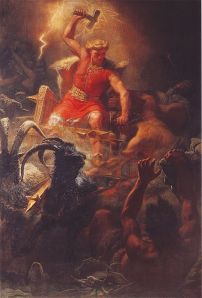You are currently browsing the monthly archive for December 2010.
Robyn Chapman here, editorial assistant at Graphic Universe. Like the rest of New York, my neighborhood was hit hard by the blizzard. Here was the view outside my Brooklyn apartment yesterday morning.
Blizzard or not, I had to venture out. I am cat-sitting for several families in Queens, and those cats were hungry. I made it to Queens, but I sure could have used a pair of snowshoes!
Our storm might have been nasty, but it can’t compare to the Great Blizzard of 1888, one of the most severe blizzards in America’s recorded history. Snowfalls in New York, New Jersey, Connecticut and Massachusetts ranged from 40-50 inches. Winds of over 45 miles per hour created huge snow drifts (imagine a snow drift over 50 feet high!) Tragically, over 400 people died.
The Snowshoeing Adventure of Milton Daub, Blizzard Trekker tells the story of a real-life 12-year old who braved the Great Blizzard of 1888. With the aid of some homemade snowshoes, he traversed the snow in his Bronx neighborhood. He went out seeking milk for his family, and ended up delivering groceries and medicine to several neighbors. It’s a great story to share with your children on a cold winter night.
In his essay for the SANE Journal, titled “This is Not Your Forefather’s Thor: Using Comics to Make Mythology Meaningful”, Nick Kremer wrestles with big questions. Why do we read mythology? Are the myths of archaic societies relevant to the students of today? How can we help students engage in these type of stories?
To answer the latter question, Kremer turned to comics. Super hero comics in particular are analogous to mythology. Kremer writes:
“…Superman, or Spider-Man, or any of the other colorful cast of characters in American comic book history have transcended recorded literature: they are not owned by any one author, their stories not confined to any one publication. They are constantly re-told and re-imagined, year after year, generation after generation, a living manifestation of the culture that gives them value. They have become genuine mythology, once again trumping the confines of a skeptical modernity that suggests the impossibility of that achievement in such an era.”
Kremer also found that comics adaptations of myths, including our own Graphic Myths and Legends, were valuable learning tools.

“Jeff Limke and Graphic Universe offer a large and diverse line of myths-in-comics, and there are many critically-acclaimed stand-alone adaptations such as Garreth Hind’s Beowulf, George O’Connor’s Zeus: King of the Gods, or Erik Evensen’s Gods of Asgard. Students who used these adaptations seemed to have an easier time understanding the message of the myth, because they were afforded the additional language of visual media as a means to translate.”
Read Kremer’s complete essay to learn how he is helping young readers to appreciate old stories.
Blended families (families in which one or both parents have children from a previous relationship) are common in today’s world, if less common in today’s literature. The Nation Stepfamily Resource Center estimates that 23-30% of America’s children live in blended families. Chances are, a few of those children are on your holiday shopping list.
The Mr. Badger and Mrs. Fox series, by Brigitte Luciani and Eve Tharlet, tells the story of two families coming together to share a burrow. The badger children (Bristle, Grub, and Berry) and the fox child (Ginger) are not happy with the arrangement. They try to convince their parents that badgers and foxes should not share a home. Over time they learn to accept each other and live together peacefully.
Learn more about this series by reading these reviews.
*Starred Review*
“This beautifully painted and sweetly told tale—the first in the Mr. Badger and Mrs. Fox series—tells how two different families meet, overcome suspicion of each other, and work to combine resources.”
Booklist
“With humor and honesty, Brigitte Luciani tackles one of the most difficult events in a young child’s life: blending two families. Luciani validates kids’ ambivalence about the process, using her trio of protagonists to give voice to the normal range of emotions — jealousy, suspicion, excitement — associated with acquiring new siblings and parents.”
School library Journal: Good Comics for Kids
“This is definitely a book that I will keep in mind for my preschoolers, as many of them come from or enter into blended families at some point in their young lives!”
Katie’s Literature Lounge





